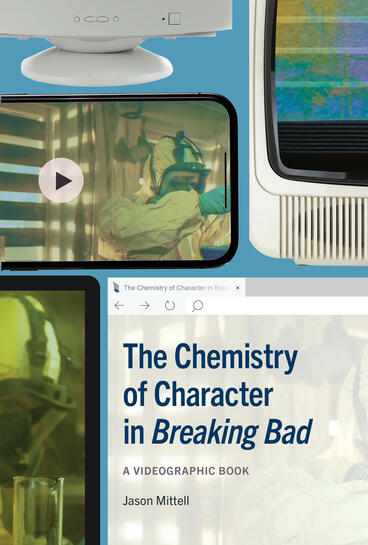The Chemistry of Character in Breaking Bad
A Videographic Book
An exploration of characters in Breaking Bad, with over 20 video essays
Description
This multimedia, open access project explores the landmark American television series Breaking Bad (2008–13) via the emerging format of videographic criticism. Featuring a collection of open access video essays, this “videographic book” aims to interpret the particular modes of characterization within the series and discusses the significance of character as an aspect of media storytelling. With this innovative project, author Jason Mittell demonstrates the vital importance and exciting possibilities of analyzing a medium using its own media form.
Videographic criticism examines media using the same material that it seeks to analyze: sounds and moving images. Videographic practices can reveal otherwise hidden facets of media, with videographic works potentially exploring aesthetic, experimental, poetic, and affective dimensions more effectively than written scholarship. Breaking Bad, which won dozens of awards throughout its five seasons, is particularly suitable for videographic criticism due to its notably vivid visual and aural style. Additionally, its construction of character is distinctive and groundbreaking, making it a welcome series to advance understanding of characterization in television and its connections to important facets like identity politics, morality, and viewer engagement. Each video essay can be viewed separately or watched together in the context of the book.
This book will be of interest to academics focused on television, media studies, and narrative theory, and also to fans of the series and its vibrant characters. The format of this project is truly unique: it acts almost as a viewing guide with more than 20 embedded video essays alongside brief written commentaries contextualizing the videos. The Chemistry of Character in Breaking Bad is a great resource for any reader or viewer who wants to dive into the series once again.
Jason Mittell is Professor of Film & Media Culture at Middlebury College. He has published seven books on American television, narrative theory, and videographic criticism.


